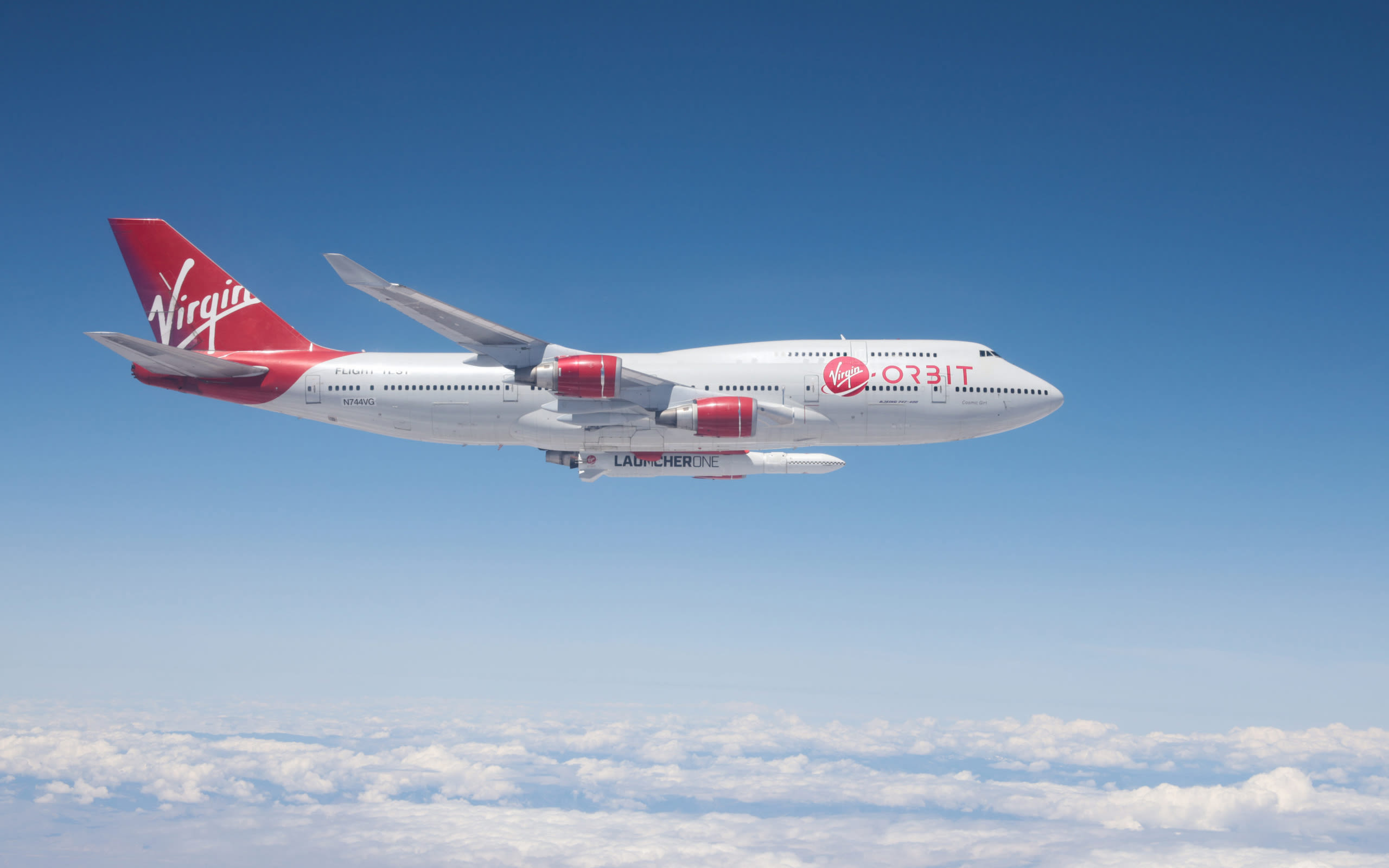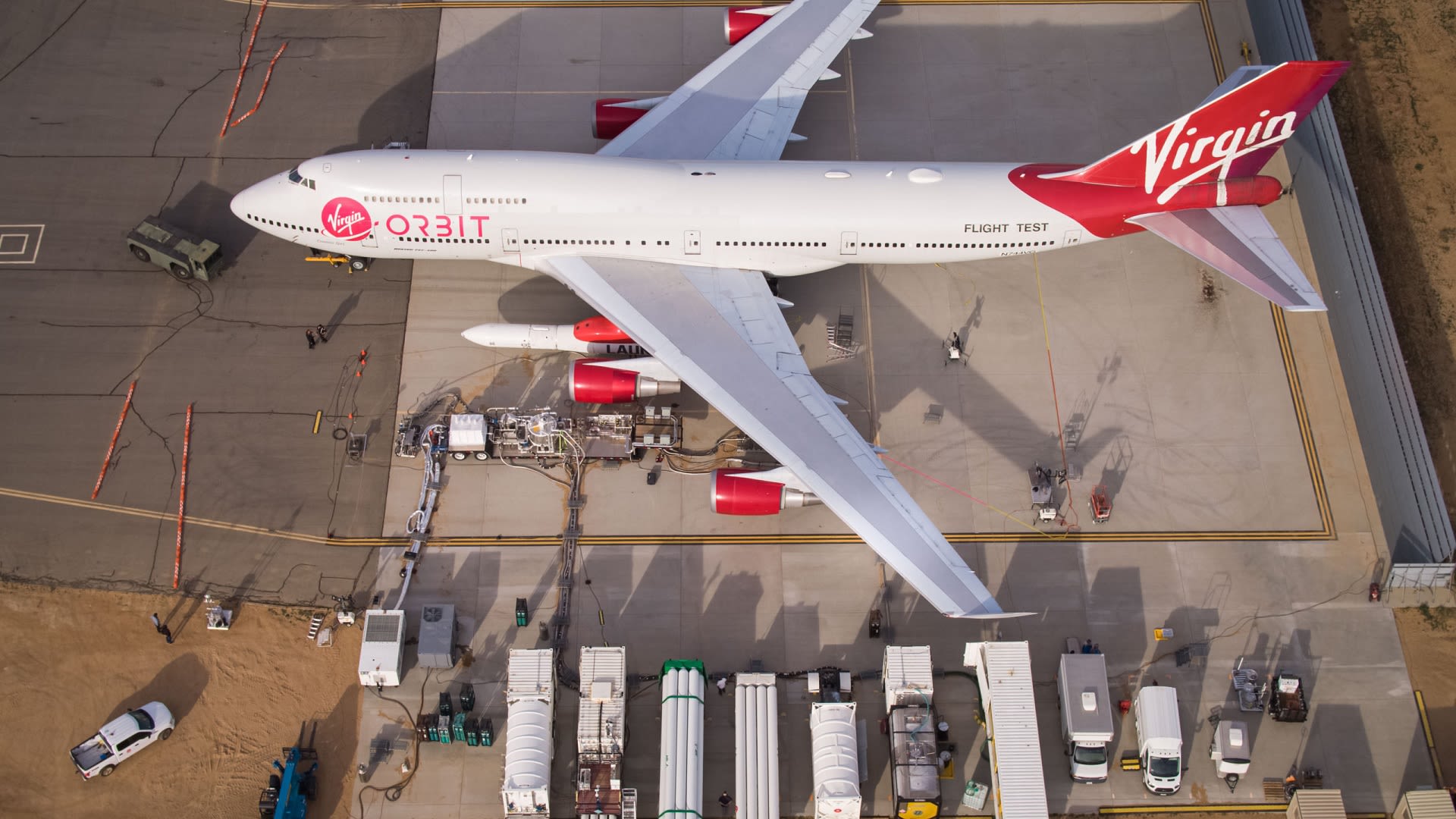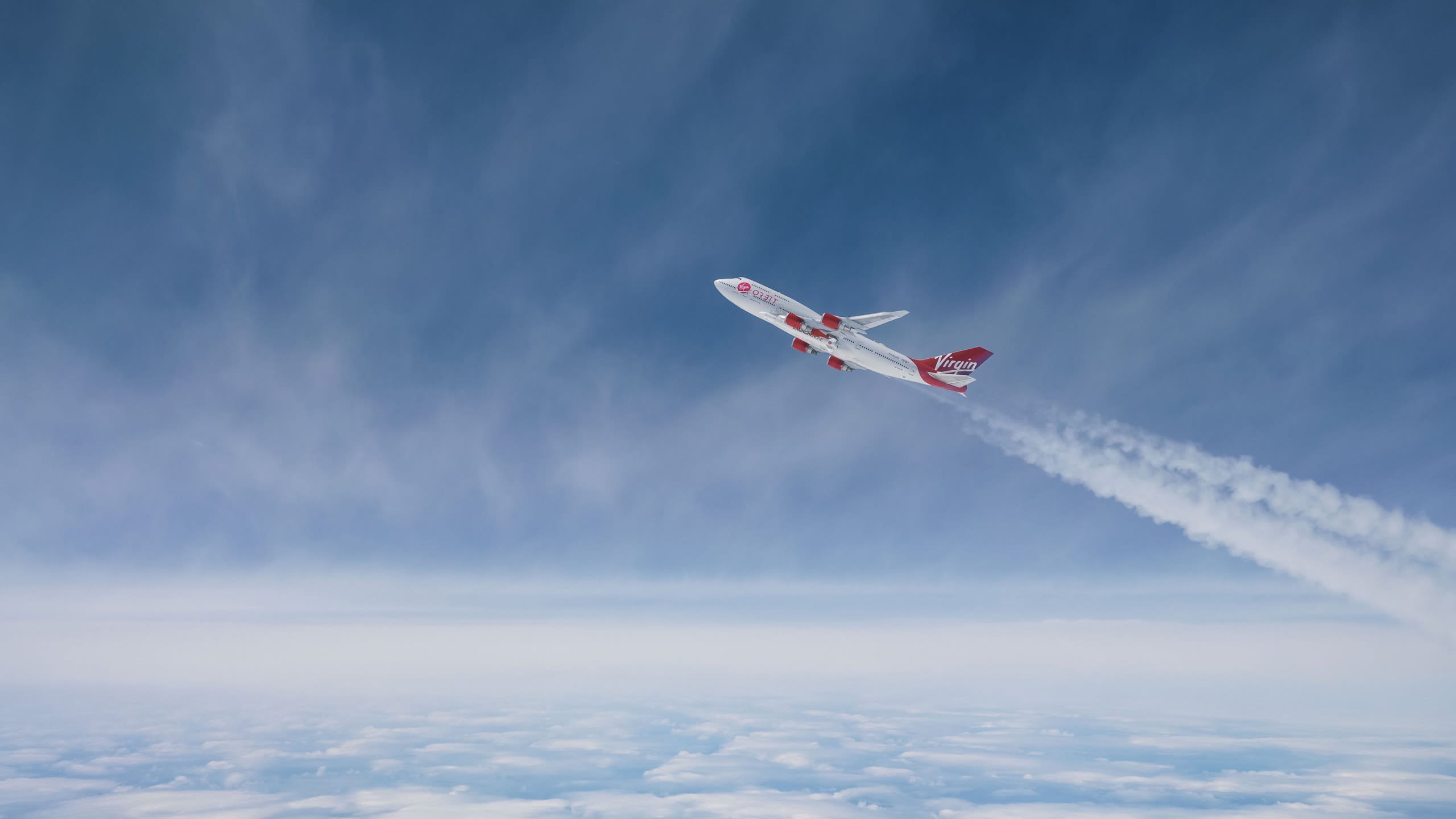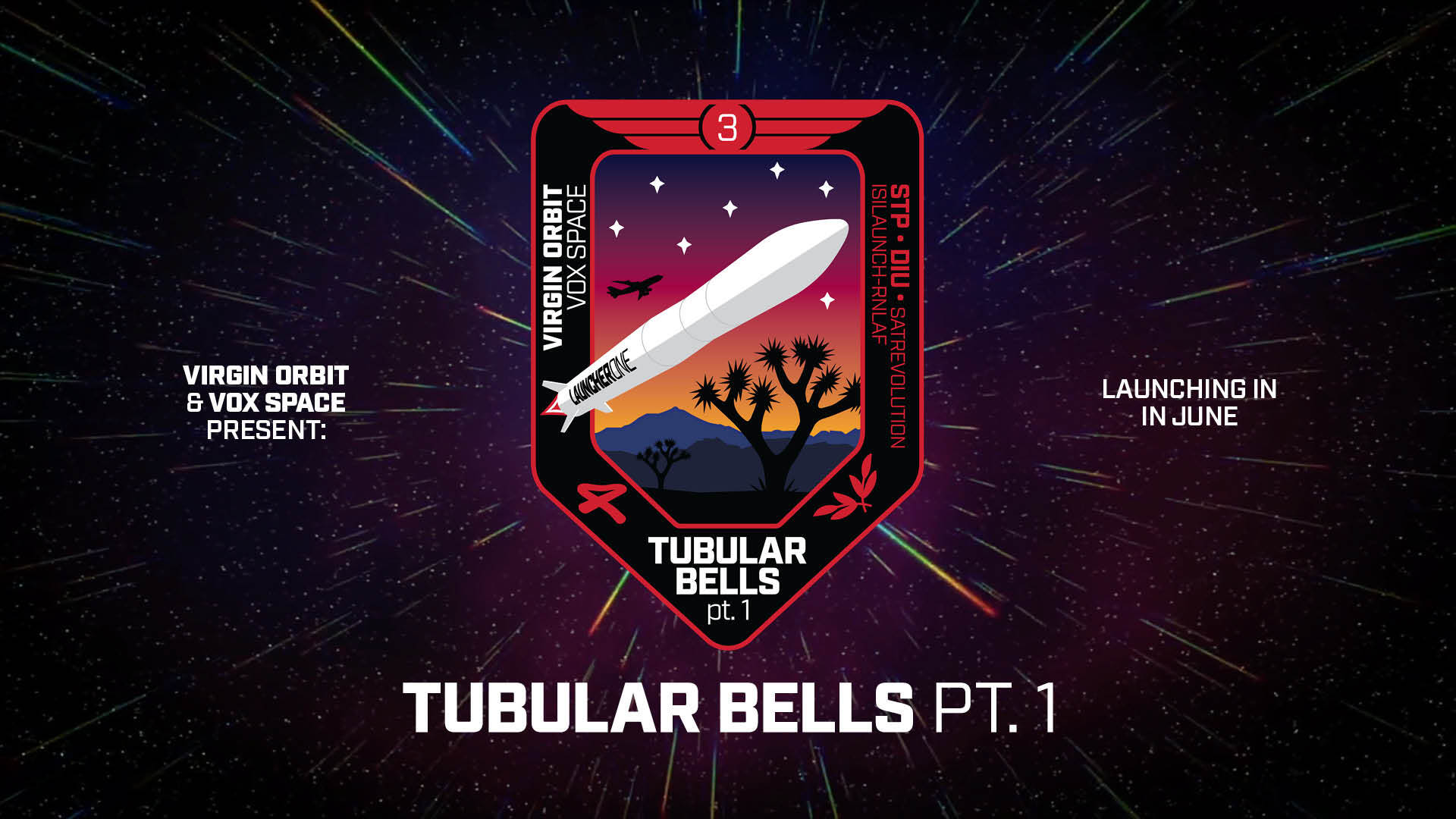What does it take to launch a rocket mid-air?
This content is part of Virgin.com’s Groundbreaker series, celebrating the creators and innovators at the forefront of radical change. From the champions of trailblazing greentech to next-gen space engineers, these are the bold new thinkers determined to make the world a better, greener and fairer place. Join us for a closer look at the beating entrepreneurial heart of Virgin and its partner companies – where innovation reigns supreme.
Virgin has never shied away from a challenge in its 50-year history, even when it comes to rocket science. Launching a rocket off the ground has already been tried and tested around the world, but launching a rocket mid-air? Now there’s a real challenge.
Heading up this innovative feat at Virgin Orbit is Nicole Lewis, manager of rocket operations. Nicole is responsible for everything that happens to the rocket after it leaves the factory and literally gets it off the ground in Mojave, California, where Virgin Orbit’ s initial launches are taking place.
Let’s start from the beginning. When planning this sort of mission, what’s the first thing that needs to be done? “It starts with designing the systems on paper and doing analysis to vet out the concepts,” explained Nicole. “Then you start building parts and subsystems and testing them individually. But once you start making piece parts you can’t lose sight of the bigger picture. When you put the vehicle together for the first time – the tanks, the engine, the flight computers, the software - you have to make sure that it all works together.”
Throughout every step of the rocket development process, testing is required to ensure it is all progressing the way Nicole and her team want such that the rocket all comes together for launch day.
“What has been amazing for me throughout my time at Virgin Orbit, has been getting to grow with the systems as they mature. When I started, the rocket only existed on paper and we had just a few of the subsystems getting built and tested. I was there as the first rocket got built and helped determine what order it should be assembled. I then led the campaign to prove the rocket works as expected during Stage Test. Running that series of tests gave me the background knowledge to understand the entire rocket and also inspired me to keep working on operations. For the two demo launches, I was in the Mission Control Centre and responsible for monitoring that the rocket was healthy and ready for launch. It was so incredible to see everything work during our successful launch in January, and it felt like such a personal accomplishment. Following the rocket from a concept to launch has been an amazing process.”
Satellites instead of people
When Nicole joined Virgin Orbit full-time in 2015, the company was still part of Virgin Galactic. Nicole recalled, “For me, it all started on the propulsion team. That's the team responsible for the engines and all the fluid systems on the rocket. I worked on systems that control everything from filling up the vehicle with propellant, pressurising the tanks, and providing system pneumatics.” For Virgin, work on a liquid propulsion engine began in 2012 to support the Virgin Galactic spaceship, which grew into potentially a new launch vehicle. As the engine continued to develop, an idea took shape: ‘what if the new launch vehicle could launch satellites into space instead of people?’
And so in 2017, Virgin Orbit launched (excuse the pun) as a separate company independent of Virgin Galactic to focus on satellite launches.
This exciting new era was full of a lot of questions. “It was dedicated to really figuring out what the system needed to do. What does the customer base look like? Who are we building this for?” said Nicole. “The team eventually settled on the design concept that we have at the moment, which is dedicated to small satellites. Instead of trying to build a really big rocket, we focused on getting the small satellites into orbit.”
As the details started to fall into place, development of the engine continued as well as a new design for propellant tanks and avionics systems. Each of these parts got designed, built, tested, and improved by different teams at Virgin Orbit dedicated to making sure their parts of LauncherOne would work successfully.
LauncherOne testing
Once the designs, building and individual testing were completed on the separate components of LauncherOne, the next step was to start integrated testing to “bring those assemblies together and make sure that they worked like a team,” according to Nicole.
The biggest part of Virgin’s Orbit integrated testing took place during the Stage Test Campaign. This operation involved putting all the qualified parts together for the first time into a full rocket stage. The team took the assembly out to Mojave, connected it to mobile launch site equipment, and worked toward a full duration hotfire of the engine, with propellants provided from the vehicle tanks and the flight computer controlling the sequence.
“The Stage Test Campaign was the first time that we really put all those things together and made sure that the interfaces worked,” said Nicole. “The main goal was making sure that we could get the whole system up and running together. We incrementally stepped through tests to learn how to control the vehicle and fine tuned our systems to get the performance we needed. And then we finally demonstrated the rocket could do it all!”
The team comprised 10 core people involved in the day-to-day planning, with tests spanning over two years. “When we were conducting the tests, we had a lot of the engineers who had been involved with the designs come in to sit on the consoles, providing feedback and input into how their systems were working. So there were probably 20 to 25 people that were involved in each major operation to get the tests completed successfully,” said Nicole.
So what exactly is LauncherOne? And what does it do? It’s an air-launched rocket that’s been designed to carry small payloads of up to 300kg (660lb) into orbit.
So despite Nicole’s testing being done on the ground, the Virgin Orbit team designed LauncherOne to be carried by a Boeing 747 named Cosmic Girl into the upper atmosphere where it is dropped off the wing and launched into space. “The coolest thing about launching it off of the wing of a plane is that we can do it from anywhere,” said Nicole.
Horizontally speaking
“If you think about where you can launch a rocket up from the ground, there are a lot of locations and direction restrictions that affect what orbit you can get into around the Earth,” explained Nicole. For the team, launching a rocket from a plane opens up more locations and more orbital paths. But it also requires the rocket to launch horizontally instead of vertically, which poses engineering challenges. So how have they achieved it?
“It definitely makes the engineering side of the problem more interesting and exciting to work on,” said Nicole. “Launching the vehicle horizontally poses differences in how we fill the vehicle up with propellants and it affects the timeline from the end of loading until the engines actually start.
“I always have to consider where the propellants actually are in the vehicle and what condition they are in when we're flying around. We need to confirm the liquid is not causing too much slosh in the tanks and that the temperatures of the really cold cryogenics don’t get too warm such that the fuel and oxidizer are in the state the engine needs when we drop. It's important to understand the aerodynamics of what the drop actually looks like, how the rocket falls away from the airplane, so we can predict what will happen and be ready for it,” said Nicole.
Just like the Stage Test Campaign verified the vehicle hardware worked together, Virgin Orbit also conducted a Flight Test Campaign to verify a lot of the analytical predictions of the flight and drop profiles. “As we built up the airplane system, we took it through a series of flight tests. We flew Cosmic Girl alone first and got familiar with that and her behaviour. We then put the pylon on, which is what attaches the rocket to the plane, and flew again to understand the aerodynamic effects with that extra component. And then we actually had a drop test vehicle that we built for the rocket and demonstrated what it was like to fly with a rocket on the wing, and then what that drop actually looks like,” said Nicole.
Going into the mission, Nicole and her crew need to make the drop location crystal clear for the pilot, so they know the starting direction, speed and altitude of the rocket flight. In order to accomplish this, the pilots have to go through rigorous exercises and training, which are carried out in 747 simulators, before they go into Launch Day.
“Once the pilots are 15 minutes away from the designated drop location, we start an automated sequence that runs through a series of commands. This takes the tanks to their flight pressure, starts getting the engines ready for launch, and turns on the internal batteries on the vehicle. It really gets the rocket ready for start up while the pilots are getting to the drop point.
“For the last launch I believe the pilots managed to drop the rocket within a couple of seconds of our target time after the 45 minute flight out, which is pretty impressive.”
The next five seconds after the rocket has dropped are crucial. In this short window, Nicole and her team watch to make sure that the rocket hasn’t rolled and that everything in the systems looks right.
Out of this world innovation
As soon as the rocket has successfully disengaged from the plane, it is fully autonomous and Nicole and team can no longer intervene. It all comes down to the flight software and the GNC (guidance, navigation and control) algorithms controlling the rocket’s flight into orbit.
The rocket’s autonomous flight safety system ensures that in the event it went off its intended trajectory, the rocket would shut itself down and essentially terminate its thrust, so that it wouldn’t ever hit land.
Pretty innovative, right?
On the subject of innovation, Nicole believes there is way more to come from the team: “Traditionally, rockets are launched with a Mission Control Centre of dozens upon dozens of operators. For us, as soon as we take off, the Mission Control Room hands off responsibility to the two pilots and two launch engineers on board the plane that are conducting the mission. And so one of the things we're looking to innovate as we get better, is to conduct launches around the world from a remote control room with a minimal number of operators.”
Anything else?
“One of the other cool things is that all of our launch support equipment is transportable. We have no permanent infrastructure at our launch locations. Before we show up, and after we leave, it's really just a concrete pad on the end of a runway. And we can do this setup in a matter of days. With this new way of launching we can arrive at a runway, quickly set up all of the ground support equipment, and have our own launch site anywhere we’re needed.”
Virgin Orbit is now preparing for its next upcoming mission – “Tubular Bells, Part One.” Tipping its hat to the Virgin brand’s iconic first album released by Virgin Records, Virgin Orbit’s next orbital launch takes place in June 2021. A public live stream of the mission will be available on the Virgin Orbit website. You can also follow on Twitter (@VirginOrbit) for all the latest.









